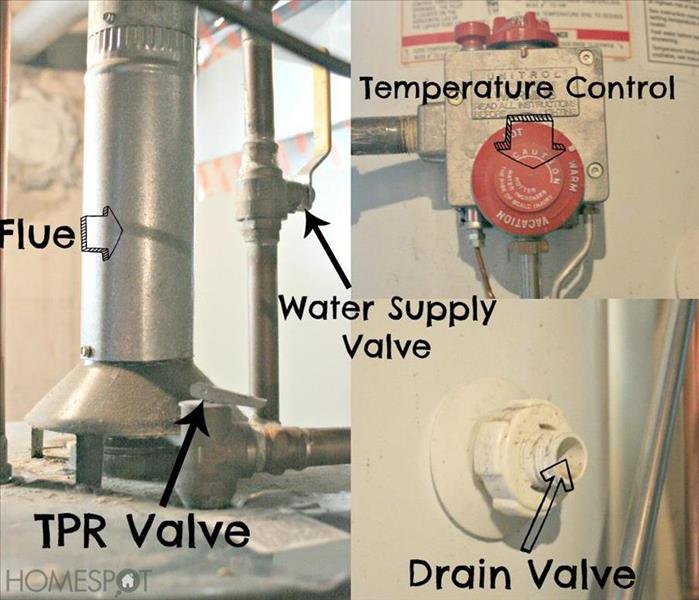Maintain Your Property’s Water Heater to Avoid Severe Water Damage
6/30/2021 (Permalink)
 An infographic denoting the various components of a water heater to guide you in the maintenance process
An infographic denoting the various components of a water heater to guide you in the maintenance process
An essential part to being a homeowner is paying great care to the appliances which heat and cool your property’s vital resources. Naturally, heating and cooling units will wear over time or collect build up of some sort depending on the unit’s method of energy transfer. With this in mind, let’s take a look at the different types of water heaters most commonly seen in homes and how to properly maintain them.
It is customary to have a tank water heater that ranges from 30-50 gallons in size, usually stored in the garage, a closet or bathroom. The unit may operate using gas or electricity, but both of these models will have a Temperature and Pressure Relief valve that maintains the movement of water from the unit to the parts of the home that require heated water. Pay heed to this valve; if it is jammed and the property’s tank does not have an emergency shut off valve, the unit will over pressurize causing it to burst or explode. This is the worst case scenario, and why we are here to inform you on the protocols to avoid such a disaster.
Check the valve to your water heater every six months by lifting and releasing the brass lever a few times, making sure that when you do this water is released from the drain pipe. If nothing is released or the stream is weak, consider calling a plumber to replace the valve. A malfunction in the Temperature and Pressure release valve could be due to corrosion or mineral build-up from years of unchecked use.
Flush your water heater once a year to avoid sediment build up that could possibly lead to a Temperature and Pressure valve malfunction. This can be done on your own but forewarning that the water contained in the heater can reach scorching temperatures. If you are not comfortable performing this task, it is in your best interest to call a plumber.
We look forward to helping our clients when given the opportunity, but we also understand what circumstances led you to call in the first place. It is always best to avoid damage, and to do that is with careful maintenance of your property. If you suspect a feature of your home is not functioning up to par, call us at (949) 429-3188 to schedule an inspection. For more property maintenance tips, read our blogs.






 24/7 Emergency Service
24/7 Emergency Service